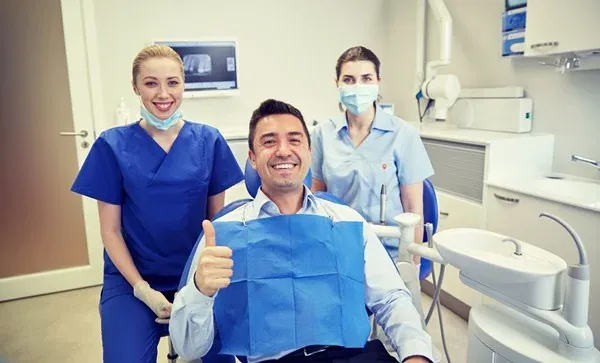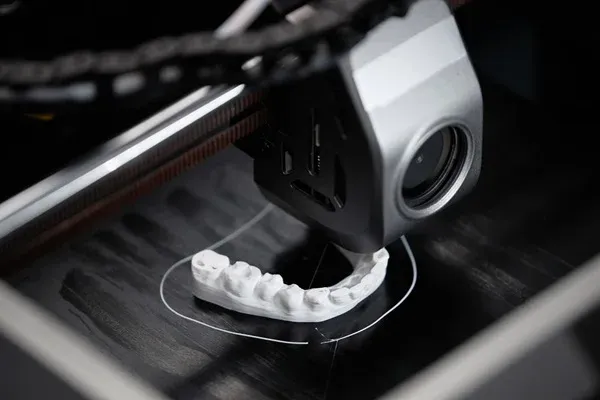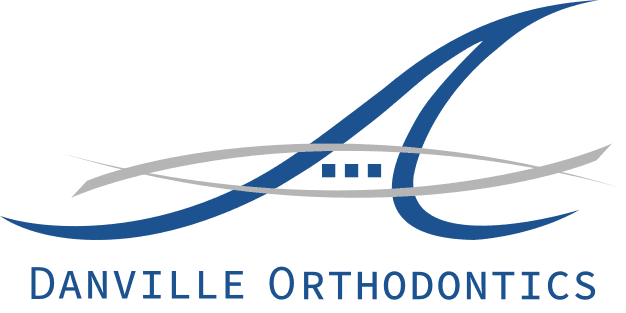The Future of Invisalign: Advancements and Innovations
Invisalign has transformed the world of orthodontics, offering a discreet and comfortable alternative to traditional braces. As technology advances, Invisalign is poised to evolve even further, pushing the boundaries of what's possible in dental care. In this blog, we'll explore the latest innovations driving the future of Invisalign, from cutting-edge digital tools and AI-driven customization to sustainable materials and remote treatment options. These advancements promise enhanced patient experiences and signal a new era in orthodontic care, where precision, convenience, and sustainability are at the forefront.
AI and Machine Learning: Enhancing Treatment Precision
Data-Driven Treatment Planning
- AI and machine learning analyze extensive datasets from previous Invisalign cases.
- These technologies help predict the most effective treatment paths for new patients.
- The result is highly personalized aligner adjustments tailored to everyone's dental structure.
Optimized Aligner Design and Timing
- AI-driven algorithms simulate tooth movements with exceptional accuracy.
- This optimization reduces the margin for error in aligner design and timing.
- Patients benefit from faster and more efficient treatment, with fewer adjustments needed.
Continuous Improvement Through Machine Learning
- Machine learning algorithms refine their predictions by learning from each new case.
- Technology adapts to emerging trends and individual variations, enhancing overall effectiveness.
- Technology adapts to emerging trends and individual variations, enhancing overall effectiveness.
Greater Predictability and Patient Satisfaction
- Improved precision in treatment planning leads to more predictable outcomes.
- Patients experience fewer surprises and disruptions during their Invisalign journey.
- The combination of AI and machine learning enhances patient confidence and satisfaction with the results.

The Future of AI in Invisalign
- As AI and machine learning technologies advance, their role in Invisalign will expand.
- Future innovations may include real-time adjustments based on ongoing treatment progress.
- The integration of these technologies will continue to push the boundaries of orthodontic care, making Invisalign even more effective and personalized.
3D Printing: Revolutionizing Aligners Production
Precision Manufacturing
- 3D printing is useful in the creation of aligners in that it offers the best precision.
- This technology enables the production of aligners that are unique to the patient's dental structures.
- This leads to increased comfort and efficiency since the aligners are made to meet the specific requirements required in the treatment process.
Rapid Prototyping and Production
- 3D printing helps to reduce the time taken in production since it is much faster than traditional methods.
- Orthodontists can create and make numerous aligners within a short span of time as compared to conventional procedures.
- This acceleration means that the patients get their aligners soon, so the overall treatment time is cut down.
Cost-Effective Production
- The use of 3D printing technology makes the manufacturing of aligners cheaper than that of traditional methods.
- This means that as the technology is adopted, the cost of treatment will be expected to be lower for patients.
- This could make Invisalign more affordable to more people.
Sustainable Manufacturing Practices
- Compared to conventional manufacturing processes, 3D printing consumes less material and produces fewer scraps.
- This is in line with the current global trend of environmental conservation as companies in the orthodontics industry look for ways to reduce their impact on the environment.
- Another aspect of sustainability is the fact that Invisalign uses recyclable and environmentally friendly materials in 3D printing.
Customization and Flexibility
- Customization of aligners is possible with 3D printing, which helps consider individual features of the teeth and preferences of the patient.
- It is quite simple for orthodontists to modify the design of the aligners depending on certain needs, thus making it possible for each set of aligners to be developed to meet the needs of the individual patient.
- This flexibility improves the efficiency of the treatment since the aligner can be designed to provide the best result.
Customized Treatments: Personalizing the Invisalign Experience
Tailored Treatment Plans
- Invisalign employs the latest technology to create treatment plans that are specific to the patient's dental anatomy.
- Orthodontists create a sequence of individualized aligners that gradually move the teeth into the desired position according to the case and the patient's expectations.
- This makes it possible to offer the best treatment, that is as efficient and effective as it can be.
Digital Scanning for Precision Mapping
- Instead of using impression trays, digital scanners take precise 3D pictures of a patient's teeth.
- These scans make it possible to plot the treatment process and guarantee that each aligner is made to create a particular movement.
- The end product is a more predictable treatment process and better fitting aligners that are more effective.
Customized Aligner Designs
- Every set of Invisalign aligners is specially designed to meet the needs of the patient in terms of their dental problems.
- Whether a patient requires some space or needs to fix crowded teeth or bite problems, the aligners are created for such purposes.
- Personalization is always a plus since it makes the treatment more comfortable and effective due to the client's preferences.
Adaptive Treatment Adjustments
- Invisalign's technology enables the doctor to make changes in the treatment depending on the patient's response.
- In case teeth are not shifting as planned, orthodontists are able to adjust the treatment plan in real-time to guarantee the best results within the shortest time possible.
- This makes the treatment more personalized, and thus, patients receive better results they need.
Patient-Centered Experience
- This is not only in the product, which is the aligners, but also in the kind of treatment that Invisalign offers to its clients.
- Patients are treated by their orthodontists, and treatment plans are formulated according to the patient's requirements and lifestyles.
- This makes the experience more satisfying for the patient, as he or she feels more involved and informed throughout the process of treatment.
Sustainability in Orthodontics: Eco-Friendly Aligners
Introduction to Eco-Friendly Orthodontics
- The awareness of environmental conservation has pushed orthodontic practitioners to find ways to practice green orthodontics.
- Eco-friendly practices are gradually being integrated into dental procedures, including Invisalign aligners, to lower the effects on the environment.
Biodegradable and Recyclable Materials
- New materials have also been engineered to create aligners that degrade faster once they have been used for some time.
- Some of them are also made from recyclable materials so that patients can return the aligners they used for recycling and thus minimize the amount of waste that goes to landfills.
- These materials are useful in reducing the impact that Invisalign treatments have on the environment.
Less Physical Material Wastage with 3D Printing Technology
- 3D printing technology is also beneficial to sustainability since it reduces the wastage of materials during production.
- Aligners are made with great accuracy and use only the required amount of material to minimize wastage.
- This is a good practice in the use of resources in manufacturing in that it is sustainable.

Energy-Efficient Production Processes
- Appropriate measures include practicing energy-efficient production methods in orthodontic practices.
- The current processes used in the production of aligners have been developed to be more efficient in terms of energy consumption and less carbon emission.
- This way, companies can reduce their negative effects on the environment through renewable energy resources and efficient production processes.
Sustainable Packaging Solutions
- Sustainability in orthodontics includes the use of environment-friendly packaging.
- Currently, Invisalign is looking into packaging materials that are either recyclable or made from recycled material.
- Less packaging and the selection of eco-friendly materials also exert a positive influence on the minimal ecological impact.
Future Trends in Sustainable Orthodontics
- New technologies and new research may bring even more environmentally friendly solutions, such as new types of biodegradable materials and more efficient production technologies.
- Since sustainability is becoming more relevant in the world, the orthodontic industry will most likely impact the development of environmentally friendly solutions.
Contact your Danville dentist, Dr. Hoss Abar, DDS, MSD, at Danville Orthodontics to learn more about advancements and innovations in the field of invisalign.
Resource:
Basics of Tooth Movement and How Orthodontics Works
*Neither this nor any other content in this media is meant to prescribe, recommend, or prevent any treatment or procedure. We highly suggest that you get the advice of a qualified dentist or other medical practitioners regarding your specific dental condition.
